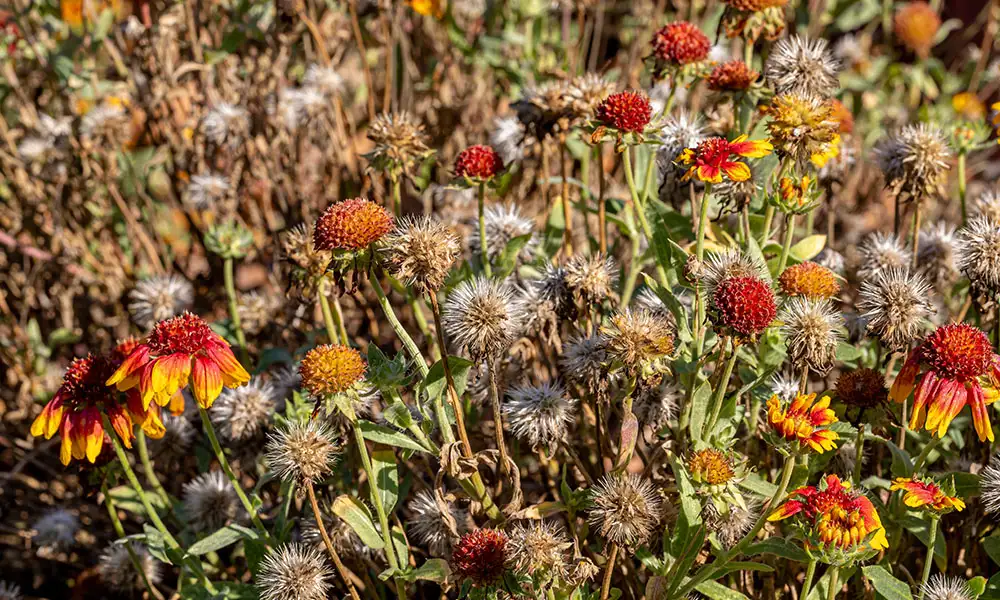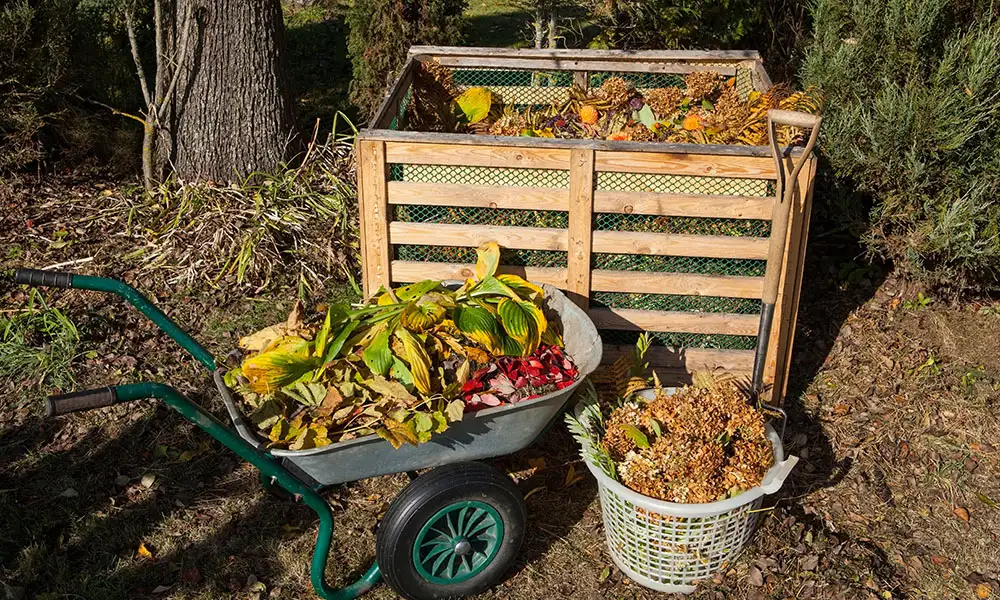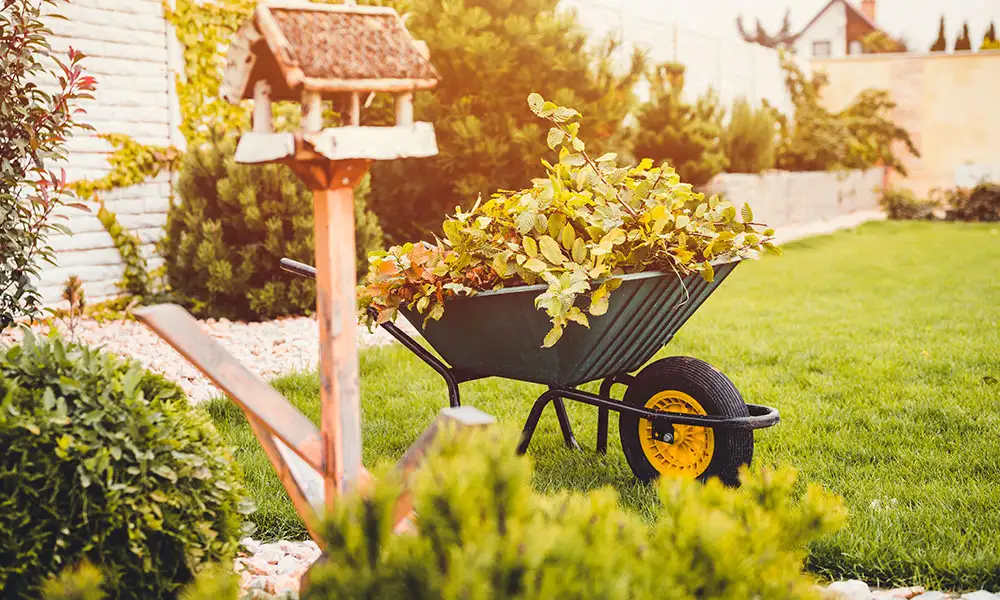As fall begins to settle in, those of us who enjoy plants in zone 6 know it’s time to start preparing for winter.
With just a bit of effort now, you can set your garden up for success next spring.
Whether you’re an experienced green thumb or just getting started, we want to take a minute to walk you through the essential fall cleanup tasks that can help your garden survive the winter months and come back even stronger next year.
Clear Out Spent Annuals and Weeds
The first step in fall cleanup is to remove any dead or dying plants, especially annuals that won’t survive the winter. These plants aren’t just done, they can also harbor pests and diseases if left in the soil, which can cause problems in the spring. By pulling them out, you’re giving your garden a fresh, clean slate.
As you clear out annuals, be sure to tackle any lingering weeds as well. Weeds compete with your garden plants for nutrients and can spread quickly if not addressed. Now is the perfect time to pull them up by the root while the soil is still loose from fall rains.
Cut Back Perennials (But Not All!)
Perennials are a staple in zone 6 gardens, but not all of them need to be cut back in the fall.
For most flowering perennials such as coneflowers, black-eyed Susans, and hostas, you’ll want to cut them back to a few inches above the ground. This helps prevent diseases and keeps your garden tidy.
However, some plants, such as ornamental grasses, sedums and hydrangeas, add winter interest with their dried flower and seed heads, as well as structure.
Plus, they provide food and shelter for wildlife during the colder months. You can wait until early spring to cut these back, so consider leaving them as a natural decoration!

Mulch for Protection
One of the most important tasks in preparing your garden for winter is mulching. As you most likely know, the ground can freeze and thaw multiple times throughout the season, which can damage plant roots. A layer of mulch helps insulate the soil, maintaining a more consistent temperature and protecting your plants.
Spread two to three inches of organic mulch—which can be shredded leaves, straw, or compost — around your perennials, shrubs, and trees.
Just be sure not to pile mulch directly against the stems or trunks, as this can invite rot or pests.

Protect Sensitive Plants
If you have plants that are borderline hardy in our zone, like roses, figs, or certain tender perennials, consider giving them some extra protection. You can wrap the base of these plants with burlap or cover them with straw or leaves to insulate against extreme cold.
Additionally, if you have any potted plants or containers, either move them to a sheltered location or consider bringing them indoors to overwinter. Garages, sheds and underneath decks are all contenders. Pots can freeze faster than the ground, putting plants in containers at greater risk of damage.

Clean and Store Garden Tools
Before you wrap up your gardening for the season, take time to clean and properly store your tools. This includes removing dirt, sharpening blades, and oiling any metal parts to prevent rust. Well-maintained tools will last longer and work more effectively, and you’ll be ready to go when spring rolls around.
Also, don’t forget to drain your garden hoses and turn off outdoor faucets. Frozen hoses can crack, and pipes can burst if water is left inside over the winter.
Compost the Right Way
As you’re cleaning up the garden, you may be tempted to toss it all on the compost pile — but be selective! While leaves, spent flowers, and healthy plant debris are great additions to your compost pile, avoid adding anything diseased or infested with pests. Composting these materials could lead to issues next year when you spread that compost back into the garden.
If you don’t have a compost pile yet, fall is the perfect time to start one! All those fallen leaves and plant debris can help build rich, organic compost to use next growing season.

Plan Ahead for Spring
Finally, as you finish your fall cleanup, take some time to consider what worked well in your garden this year and what didn’t. Were there certain plants that struggled or areas of the garden that didn’t thrive as you had hoped?
Jot down notes now so you can make adjustments come spring. Maybe you’ll decide to plant more drought-tolerant varieties, expand your vegetable garden, or look for particular companion plants that do so well together.
Winter is also a great time to review seed catalogs and make a plan for next year’s garden, giving you something to look forward to during the colder months.
By tackling these essential fall cleanup tasks now, you’ll not only protect your garden through the winter, but also set yourself up for a successful growing season next year.
Here in Connecticut, with our mix of cold and mild winter days, preparation is key. So grab your gloves and tools, and enjoy a little more time outdoors before the frost settles in. Your garden will thank you! And happy gardening!

As always, if you have any questions or need some advice, your friends at Burnett’s Country Gardens are here for you. Let us know how your outdoor space is doing and what plans you have for it!
